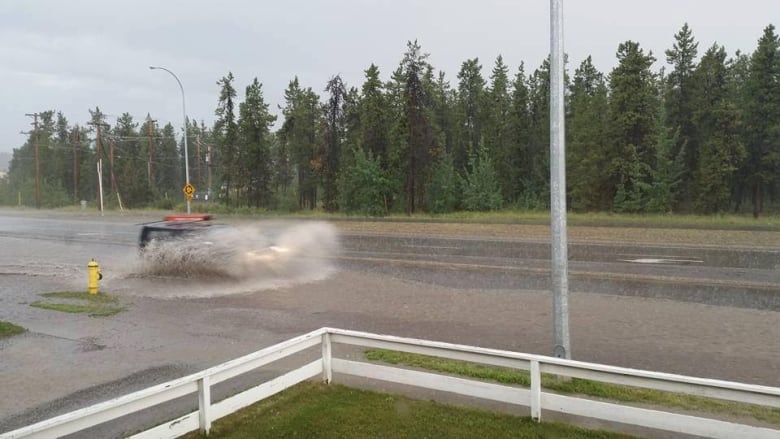Whitehorse saw 40 per cent more rain than usual this summer
Hydrologist not concerned about flooding, despite unusually high levels of rain
It's been a rainy summer in Whitehorse, with scientists measuring about 40 per cent more rainfall than usual.
That rainfall is causing lakes and rivers to rise, according to hydrologist Rick Janowicz.
"For the upper Yukon River we are above seasonal average. We're approximately 36 centimetres above normal this time of year for Marsh Lake," he says.

Despite the high water, Janowicz says he's not worried.
"It's not really anywhere near flood stage. It's about 20 centimetres off and it's very likely peaked now," he says.
This summer there was some flash flooding in Whitehorse and Carcross after about 20 millimetres of rain fell in a matter of hours.
Janowicz says levels will likely begin to recede in the next few days. He says this year's high water levels are especially remarkable, because the snow pack was low.
He attributes the unusual weather to climate change.
"Climate change is a Yukon reality and we are seeing very significant changes to hydrologic response. There's been significant changes to the glacial ice system over decades," he says.
Melting snow pack is usually responsible for high water levels. However this isn't the case this year, Janowicz says.
One benefit of the rainfall has been the dampening of forest fires.
Yukon Wildland Fire Services has called the summer of 2016 "remarkably quiet."